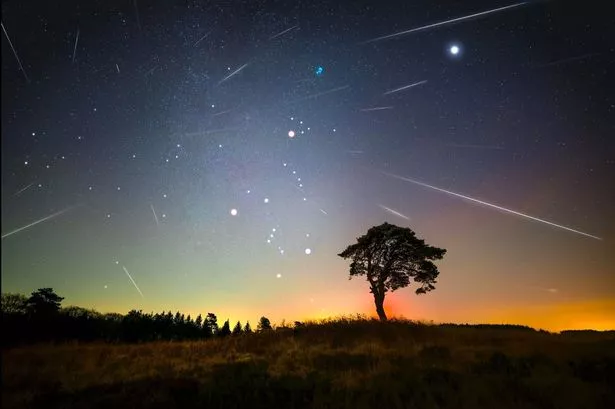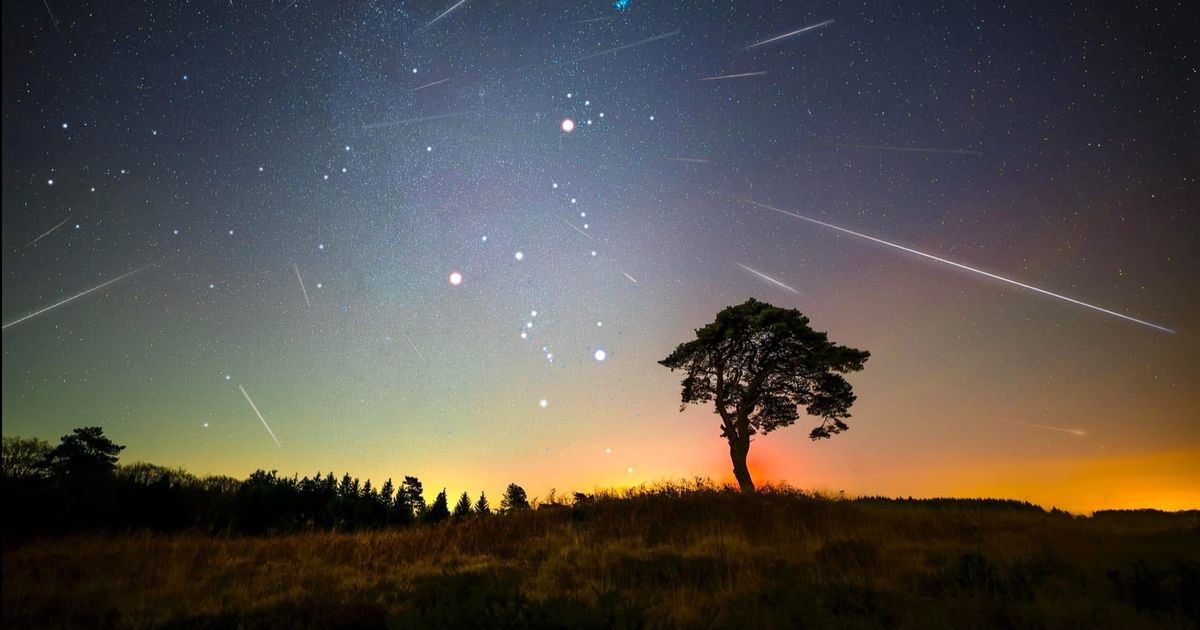The Eta Aquariids is associated with the Comet Halley
16:20, 05 May 2025Updated 16:23, 05 May 2025
 Stargazers are in for a treat this bank holiday Monday(Image: PA)
Stargazers are in for a treat this bank holiday Monday(Image: PA)
Stargazers are in for a treat this Bank Holiday Monday as a meteor shower is set to peak this evening, May 5. The Eta Aquariid meteor shower is active between April 19 and May 28, 2025, peaking between midnight and dawn this evening.
Although the shower favours the Southern Hemisphere, it still appears low in the sky for northerly latitudes, including the UK.
Meteor showers are a permanent fixture on astronomers’ calendars because of their reliability. Most showers can be easily visible with the naked eye without the need for any specialist equipment.
They are usually named after a star or constellation that is close to where the meteors appear in the sky. Scientists estimate that about 48.5 tonnes (or 44,000 kilograms) of meteoritic material falls on Earth each day.
Almost all the material is vaporised in Earth’s atmosphere, leaving a bright trail fondly called “shooting stars.” Several meteors per hour can usually be seen on any given night. When the number increases dramatically, these events are called meteor showers.
The Eta Aquariids is a moderately active meteor shower associated with the Comet Halley. The name comes from one of the stars from this constellation, which is Eta Aquarii. The peak will happen this evening, with a peak rate of 40 meteors every hour.
According to the Royal Museums Greenwich, “In 2025 the Eta Aquariid shower begins on April 19, when the Moon is in its waxing gibbous phase, and continues until May 28.
“Its maximum is on May 5, happening one day after the first quarter moon, resulting in slightly unfavourable seeing conditions.”
The museum says for the best viewing conditions, you want to “find a safe location away from street lights and other sources of light pollution.”
The Eta Aquariids is one of two meteor showers created by debris from Comet Halley. The other is the Orionid meteor shower, which comes in October. Meteors are pieces of debris that enter our planet’s atmosphere at speeds of up to 70 kilometres per second, vaporising and causing the streaks of light we call meteors.
The meteor shower comes after April’s Lyrid meteor shower. However, NASA says: “The light from the waxing Moon will wash out the fainter meteors this year – expect to see at most 10 to 15 meteors per hour just before dawn on the morning of the 6th.”
The pieces of space debris that interact with our atmosphere to create the Eta Aquariids originate from Comet 1P/Halley. Each time that Halley returns to the inner solar system, its nucleus sheds a layer of ice and dust into space.
The dust grains eventually become the Eta Aquariids in May and the Orionids in October if they collide with Earth’s atmosphere. Comet Halley takes about 76 years to orbit the Sun once. The last time it was seen by casual observers was in 1986. Comet Halley will not enter the inner solar system again until 2061.
Meteor shower calendar 2025 for the remainder of the year:
- Eta Aquariids: April 19 – May 28. There meteors will be low in the sky and are associated with Comet Halley
- Alpha Capricornids: July 3 – August 15. Expect to see yellow slow fireballs
- Delta Aquiariids: July 12 – August 23. Steady stream of meteors over several days
- Perseids: July 17 – August 24. Many fast and bright meteors with trains
- Draconids: October 6-10. Associated with Comet 21/P Giacobini-Zimmer
- Orionids: October 2 – November 7. Fast with fine trains, associated with Comet Halley
- Taurids: Southern September 10 – November 20/ Northern October 20 – December 10. Very slow meteors
- Lenoids: November 6 – November 30. Fast bright meteors with fine trains. Associated with Comet Tempel-Tuttle
- Geminids: December 4 – December 20. Plenty of bright meteors, few trains.
- Ursids: December 17 – December 26. Sparse shower. Associated with comet 8P/Tuttle
